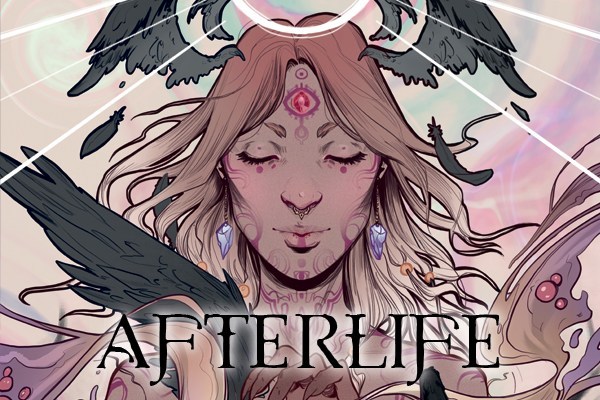Horror in the Mundane
Posted on April 4, 2019 by Flames
Hi all, my name is Liz and I’m the owner of Angry Hamster Publishing. In May 2019 our newest game Afterlife: Wandering Souls launches on Kickstarter and the Flames Rising blog was kind enough to let me write a guest post about the game and what horror could mean to player characters.
The premise of Afterlife: Wandering Souls (AWS) is: You die, but you don’t end up where you are meant to go – Heaven, Hell, reincarnation, a great nothingness. Instead, you are transported to the Tenebris – a giant scorching desert reaching into eternity. You travel the Tenebris entering into different Limbos (worlds) in search of memories from your past life and struggling to come to terms with who you were and what you lost.
I set up the Tenebris and Limbo themselves to be macabre, dramatic, and scary. I love traveling Burton-esque worlds that flirt with the strange and embrace the darkness of death. Oddly, the concept is romantic to me and if I look at a lot of popular media – it is romantic to a lot of other people as well. However, once you start playing in a world that accepts a staircase made of bones as ‘normal’ these themes become normal to you as a player as well – despite how mentally beautiful they may seem.
So, for me the question in AWS became – where is the horror? Horror is a great way to add drama to your game, to challenge player’s morals, to set a tone, it has an infinite number of uses and is a main staple in every game I love. However, when I look closer at the games I truly cherish the horror in character’s lives never comes from foreign sources, but rather a character’s personal struggles.
As the steadfast GM for my home group I’ve thrown every external horror I can think of at my players. A horde of zombies, vampires, a shadow disappearing and reappearing in strange places, a horde of vampiric zombies with weird shadow powers… trust me I’ve tried it all. But it’s the pieces of personal horror that put my players on the edge of their seats; it’s when something they love is put in danger – a daughter lost, a library destroyed, a veiled threat against a long time lover.
In these beautiful moments my players truly invest in the story and deeply connect to the personal torment that comes from the threat of losing something they love. These are the moments of true horror as mundane as they may be. There is no supernatural threat, though the person threatening may be supernatural, but instead there is a human element every person is able to understand.
Taking this lesson of mundane horror back to AWS I decided to create a system by which players had no choice, but to embrace the personal horror in their lives. Wanderers (the PCs) have no memories of their past lives and must actively search for these memories or fall prey to stagnation – which can eventually make a character unplayable. When Wanderers find a link to a past memory the player declares this to the GM. For example, maybe a monarch chastising the party sparks a memory in one Wanderer’s head of a grandparent. GM then creates a memory scene for the Wanderer to play out.
Players decide what sparks a memory – GMs decide what that memory is. Memories don’t always have to be horrific, but Wanderers are in the Tenebris for a reason and by playing through multiple memories players get an impending sense of fear in what they may discover about their past, their deaths, and why they’ve been cast into the Tenebris. This tension within a Wanderer propels them forward – to escape the Tenebris they must learn who they are – but it also provides no small amount of personal horror – they may not like who they are.
In games like Afterlife: Wandering Souls, and many horror games, the deepest fears your player’s experience are fears based in reality. They aren’t the ghostly apparition in the doorway or the creaking floorboards of an old house. True horror comes from within and is most often utterly mundane.
————————–
Find out more about Afterlife: Wandering Souls at Angryhamsterpublishing.com or follow Angry Hamster Publishing on Twitter @angryhamsterrpg
Tags | indie rpgs


